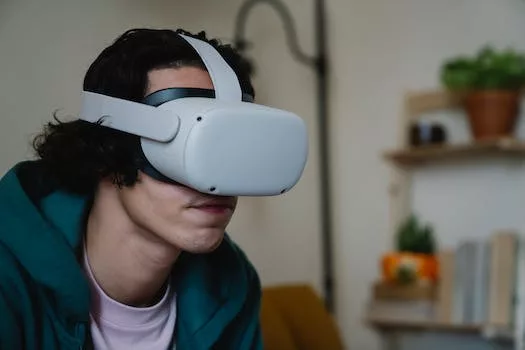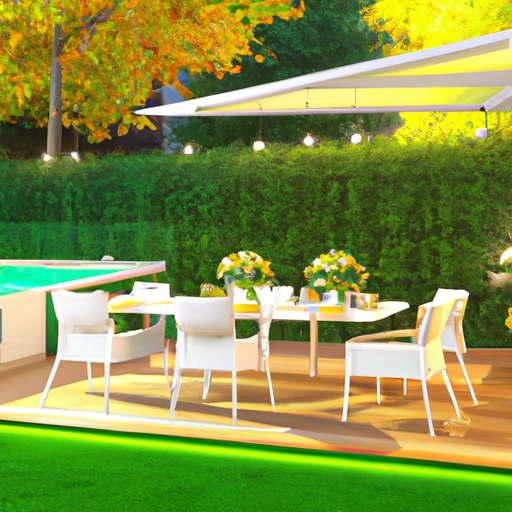Integrating Biophilic Design Elements for a Cohesive Indoor-Outdoor Living Space
Creating a seamless indoor-outdoor living experience in modern complexes is an increasingly popular trend in contemporary architecture and interior design. This approach not only enhances the aesthetic appeal of a space but also promotes a healthier and more sustainable lifestyle. Integrating biophilic design elements is a key strategy in achieving a cohesive indoor-outdoor living space, as it fosters a deep connection between the built environment and the natural world.
Biophilic design is an innovative concept that seeks to incorporate nature into the built environment, thereby improving the overall well-being of its occupants. This design philosophy is based on the idea that humans have an innate affinity for nature, and that incorporating natural elements into our living spaces can have a profound impact on our physical and mental health. By integrating biophilic design elements into modern complexes, architects and designers can create spaces that not only look beautiful but also promote a sense of well-being and connection to the natural world.
One of the most effective ways to create a seamless indoor-outdoor living experience is by incorporating natural materials into the design of a space. This can include using wood, stone, and other organic materials for flooring, walls, and furniture. These materials not only provide a visual connection to nature but also help to create a more tactile and sensory experience for occupants. For example, the use of reclaimed wood for flooring can add warmth and character to a space while also serving as a reminder of the natural world outside.
Another important aspect of biophilic design is the incorporation of natural light and views. Large windows, skylights, and glass doors can help to bring the outdoors in, providing a constant visual connection to nature. This not only helps to create a more inviting and open space but also has been shown to improve mood and productivity. Additionally, the use of natural light can help to reduce energy consumption by minimizing the need for artificial lighting during daylight hours.
In addition to natural materials and light, the integration of living plants into the design of a space is a key component of biophilic design. This can include incorporating green walls, vertical gardens, or even indoor trees into the design of a space. Living plants not only provide a visual connection to nature but also help to improve indoor air quality by filtering pollutants and releasing oxygen. Furthermore, the presence of plants has been shown to reduce stress and promote a sense of well-being among occupants.
Creating a seamless transition between indoor and outdoor spaces can also be achieved through the use of outdoor living areas. This can include the incorporation of patios, decks, or balconies that are designed to be an extension of the interior living space. By blurring the lines between indoor and outdoor spaces, occupants can enjoy the benefits of nature while still being protected from the elements.
Finally, the use of water features can also help to create a cohesive indoor-outdoor living experience. This can include incorporating fountains, ponds, or even small streams into the design of a space. The sound of flowing water can help to create a calming and tranquil atmosphere, while also providing a visual connection to nature.
In conclusion, integrating biophilic design elements into modern complexes is an effective way to create a seamless indoor-outdoor living experience. By incorporating natural materials, light, plants, outdoor living areas, and water features into the design of a space, architects and designers can create environments that not only look beautiful but also promote a sense of well-being and connection to the natural world. As our lives become increasingly urbanized, it is more important than ever to find ways to maintain our connection to nature and create spaces that promote health and well-being.
Innovative Architectural Solutions for Blurring the Lines Between Interior and Exterior Spaces

Creating a seamless indoor-outdoor living experience in modern complexes is an architectural trend that has gained significant traction in recent years. This design approach aims to blur the lines between interior and exterior spaces, fostering a sense of connection with nature and promoting a more sustainable, healthy lifestyle. Innovative architectural solutions are at the heart of this movement, as they enable the creation of spaces that are not only visually stunning but also highly functional and adaptable to the needs of their occupants.
One of the key elements in achieving a seamless indoor-outdoor living experience is the use of large expanses of glass. Floor-to-ceiling windows and sliding glass doors not only allow for an abundance of natural light to flood the interior spaces but also create a visual connection with the outdoors. This can make the interior spaces feel larger and more open, while also providing unobstructed views of the surrounding landscape. Moreover, the use of energy-efficient glazing can help to minimize heat loss and gain, ensuring that the indoor environment remains comfortable throughout the year.
Another innovative architectural solution for creating a seamless indoor-outdoor living experience is the incorporation of retractable walls and partitions. These systems can be designed to fold, slide, or pivot, allowing for the complete or partial opening of interior spaces to the outdoors. This flexibility enables occupants to easily adapt their living environment to suit their needs and preferences, whether they want to create a more intimate setting or a larger, more open space for entertaining. Additionally, retractable walls and partitions can be constructed from a variety of materials, including glass, wood, and metal, offering a range of aesthetic options to suit different architectural styles.
The integration of outdoor living spaces, such as terraces, balconies, and courtyards, is another essential aspect of creating a seamless indoor-outdoor living experience. These spaces can serve as extensions of the interior living areas, providing additional space for relaxation, dining, and entertaining. To further enhance the connection between the indoors and outdoors, architects can incorporate elements such as built-in seating, fire pits, and water features, which not only add visual interest but also create a more inviting and comfortable atmosphere.
Landscaping plays a crucial role in blurring the lines between interior and exterior spaces. By carefully selecting and arranging plants, trees, and other natural elements, architects can create a sense of continuity between the built environment and the surrounding landscape. This can be achieved through the use of green roofs and living walls, which not only provide visual interest but also offer numerous environmental benefits, such as improved air quality, reduced energy consumption, and increased biodiversity.
Finally, the choice of materials and finishes can greatly influence the overall success of a seamless indoor-outdoor living experience. By selecting materials that are both durable and visually appealing, architects can create a cohesive design language that extends from the interior spaces to the exterior environment. This can include the use of natural materials, such as stone, wood, and concrete, as well as more contemporary options, such as metal and composite materials.
In conclusion, creating a seamless indoor-outdoor living experience in modern complexes requires a thoughtful and innovative approach to architectural design. By incorporating large expanses of glass, retractable walls and partitions, integrated outdoor living spaces, carefully considered landscaping, and a cohesive material palette, architects can successfully blur the lines between interior and exterior spaces, fostering a sense of connection with nature and promoting a more sustainable, healthy lifestyle for occupants.
Top Landscaping Techniques to Enhance the Flow of Modern Complexes for Seamless Living
Creating a seamless indoor-outdoor living experience in modern complexes is a growing trend in contemporary architecture and design. This concept aims to blur the boundaries between the interior and exterior spaces, allowing residents to enjoy the best of both worlds. By incorporating top landscaping techniques, architects and designers can enhance the flow of modern complexes, creating a harmonious and seamless living experience for residents.
One of the most effective ways to create a seamless indoor-outdoor living experience is by using large glass windows and doors. These elements not only allow natural light to flood the interior spaces but also provide unobstructed views of the outdoor landscape. By using sliding or folding glass doors, residents can easily open up their living spaces to the outdoors, creating a continuous flow between the two areas. This design feature not only enhances the visual connection between the indoor and outdoor spaces but also encourages residents to spend more time outside, enjoying the fresh air and natural surroundings.
Another landscaping technique that can be used to create a seamless indoor-outdoor living experience is the use of consistent flooring materials. By extending the same flooring material from the interior spaces to the outdoor areas, designers can create a visual continuity that makes the transition between the two spaces feel more natural. This can be achieved by using materials such as concrete, stone, or wood, which are suitable for both indoor and outdoor use. Additionally, using the same color palette and textures for both the interior and exterior spaces can further enhance the sense of continuity and flow.
Incorporating outdoor living spaces, such as patios, decks, and balconies, is another effective way to create a seamless indoor-outdoor living experience. These spaces can be designed to function as extensions of the interior living areas, providing additional space for relaxation, dining, and entertainment. By incorporating comfortable seating, outdoor kitchens, and fire pits, these outdoor living spaces can become inviting and functional areas that residents will want to use throughout the year.
Landscaping plays a crucial role in creating a seamless indoor-outdoor living experience. By carefully selecting and positioning plants, trees, and other landscape elements, designers can create a sense of privacy and enclosure while still maintaining a connection to the surrounding environment. For example, using tall trees and hedges can create a natural barrier between the outdoor living spaces and the neighboring properties, providing privacy without obstructing the views. Additionally, incorporating water features, such as ponds, fountains, and waterfalls, can add a sense of tranquility and serenity to the outdoor spaces, further enhancing the overall living experience.
Lighting is another essential aspect of creating a seamless indoor-outdoor living experience. By using a combination of ambient, task, and accent lighting, designers can create a warm and inviting atmosphere that encourages residents to spend more time outdoors. Additionally, incorporating energy-efficient LED lights and solar-powered fixtures can help reduce energy consumption and promote sustainability.
In conclusion, creating a seamless indoor-outdoor living experience in modern complexes requires careful planning and attention to detail. By incorporating large glass windows and doors, consistent flooring materials, outdoor living spaces, strategic landscaping, and appropriate lighting, architects and designers can create a harmonious and seamless living environment that allows residents to enjoy the best of both worlds. As the trend of indoor-outdoor living continues to grow in popularity, it is essential for designers to stay up-to-date with the latest techniques and innovations to create functional and aesthetically pleasing spaces that cater to the needs and preferences of modern residents.
Q&A
Question 1: What are the key design elements to consider when creating a seamless indoor-outdoor living experience in modern complexes?
Answer 1: The key design elements to consider are large glass doors or retractable walls, consistent flooring materials, cohesive color schemes, and incorporating outdoor elements like greenery and water features into the indoor space.
Question 2: How can technology be utilized to enhance the indoor-outdoor living experience in modern complexes?
Answer 2: Technology can be utilized through smart home systems that control lighting, temperature, and entertainment both indoors and outdoors, as well as motorized retractable walls or screens that can easily open or close to connect or separate the spaces.
Question 3: What are some benefits of creating a seamless indoor-outdoor living experience in modern complexes?
Answer 3: Benefits include increased natural light and ventilation, expanded living and entertaining spaces, a stronger connection to nature, and improved overall well-being for residents.
Conclusion
In conclusion, creating a seamless indoor-outdoor living experience in modern complexes is essential for enhancing the quality of life for residents. By incorporating elements such as open floor plans, large windows, and natural materials, architects and designers can successfully blur the boundaries between interior and exterior spaces. Additionally, integrating green spaces, outdoor amenities, and sustainable technologies further contributes to a harmonious and eco-friendly living environment. Ultimately, these design strategies promote a healthier, more connected, and enjoyable lifestyle for those residing in modern complexes.


